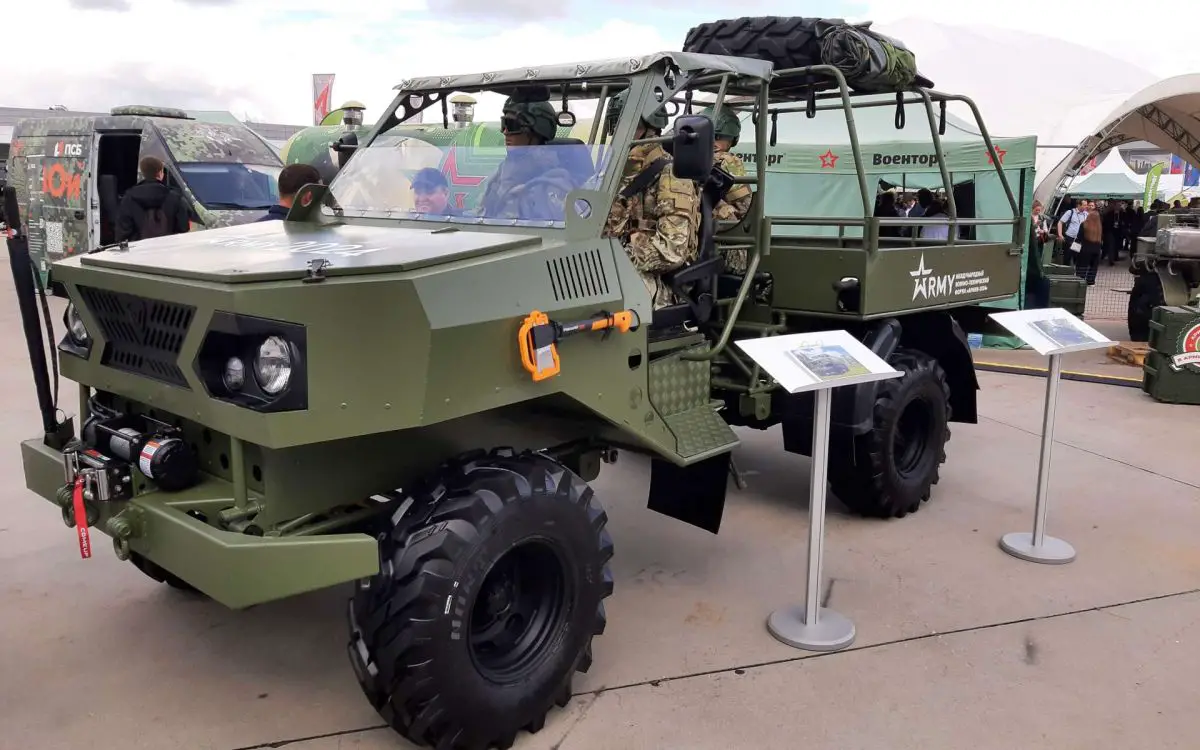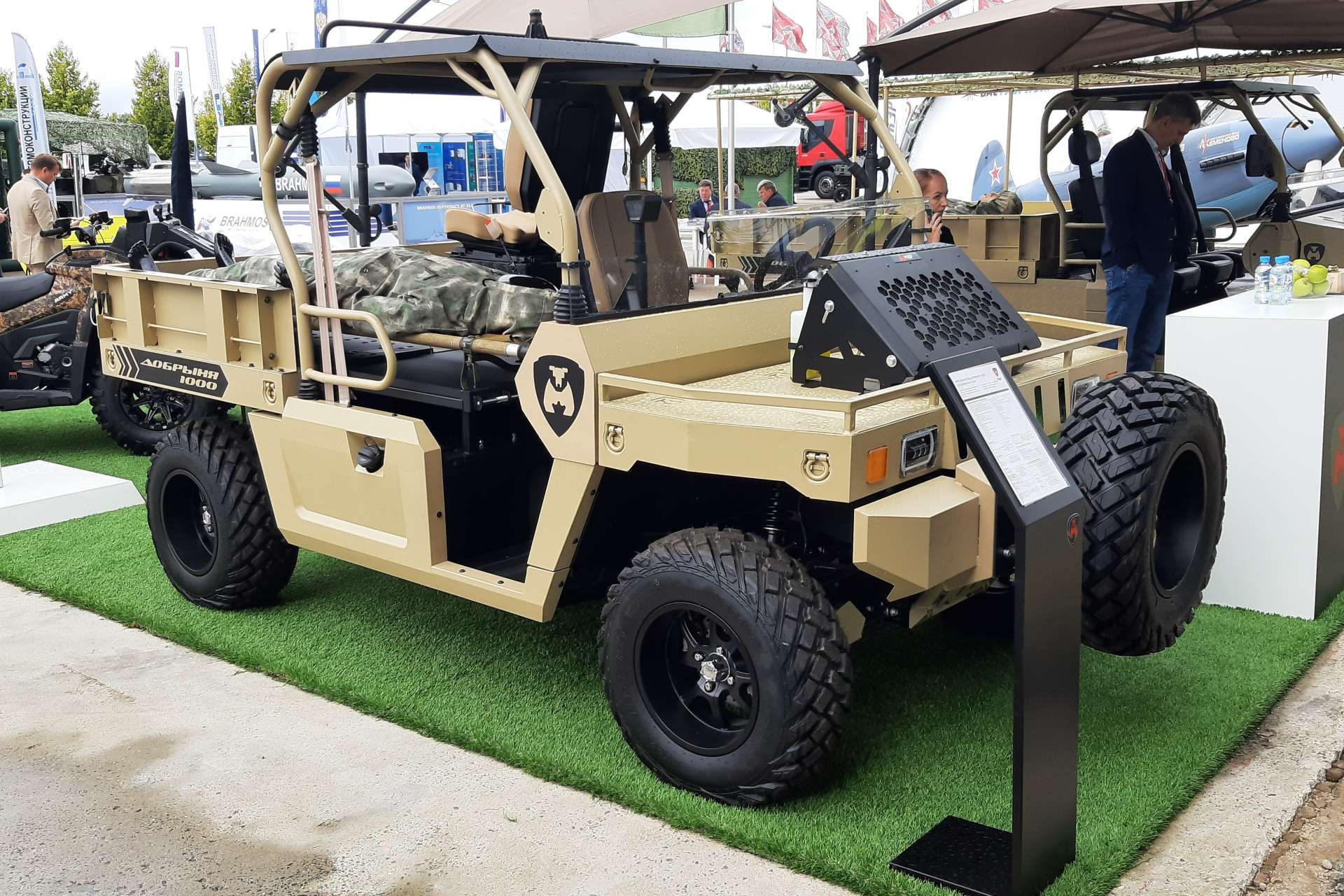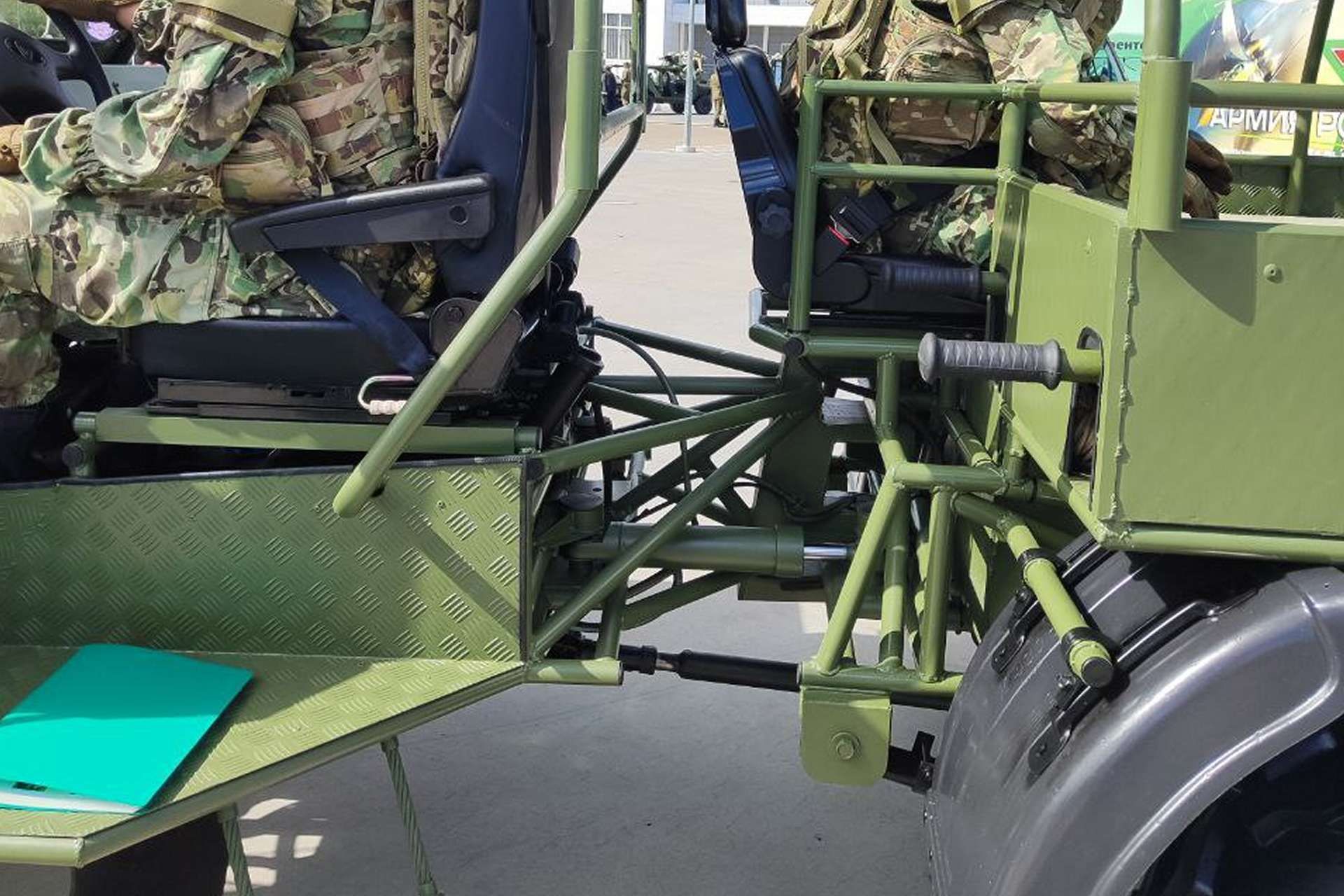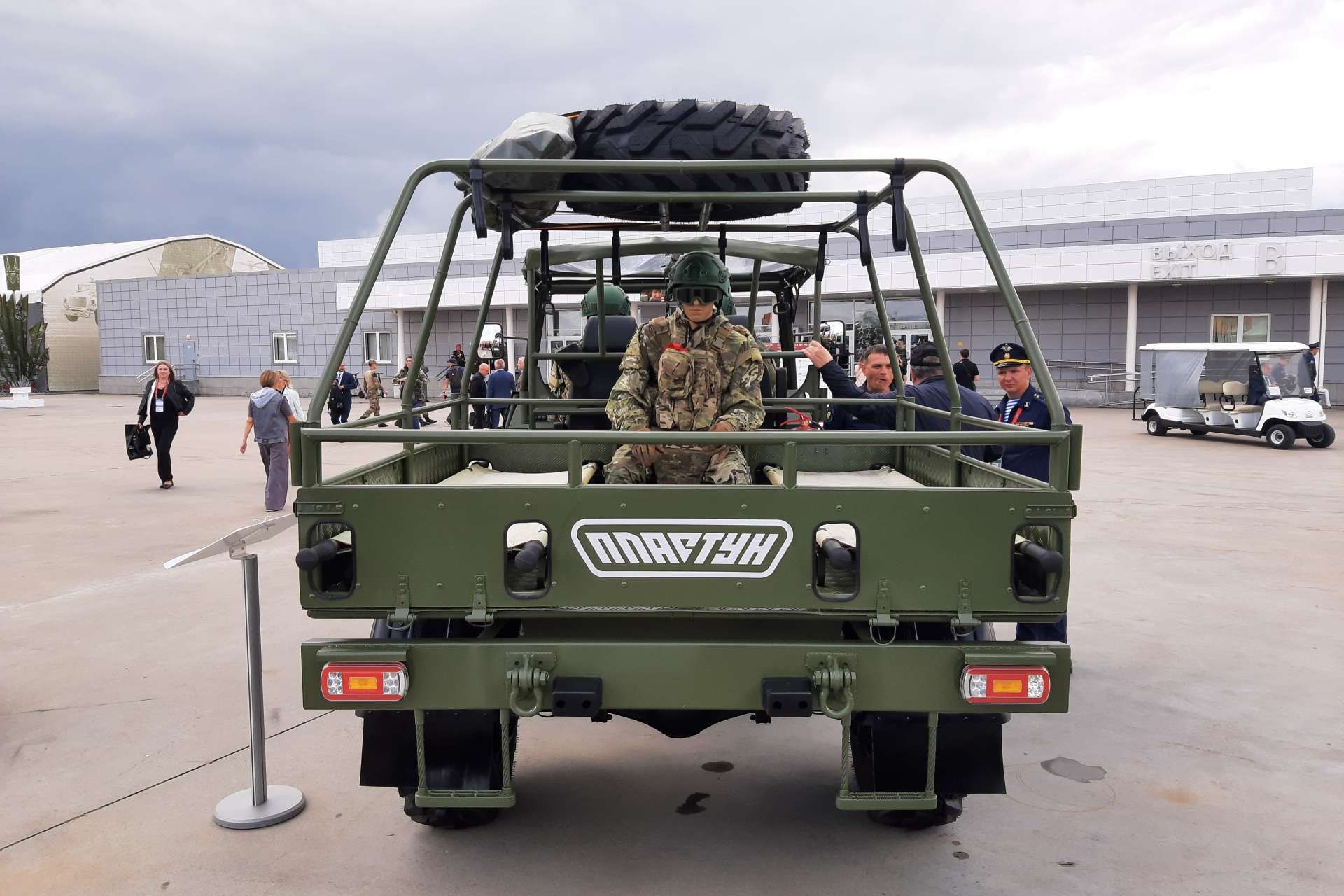Breaking News
Russian Army views new Plastun-TT articulated ATV as replacement for Chinese Desertcross in Ukraine.
At the Army-2024 exhibition, the Russian company Plastun presented its new Plastun-TT articulated all-terrain vehicle (ATV), designed to meet specific requirements of the Russian armed forces, particularly for light and maneuverable transport in challenging conditions. Discussions are ongoing regarding the possible deployment of the Plastun-TT to Russian military units in Ukraine. This new ATV is being considered as an alternative or complement to the Chinese Desertcross 1000-3s, which were first deployed by the Russian Army in November 2023.
Follow Army Recognition on Google News at this link

This new Plastun-TT ATV is being considered as an alternative or complement to the Chinese Desertcross 1000-3s, which were first deployed by the Russian Army in November 2023. (Picture source: Russian social media)
By mid-November 2023, the Russian Armed Forces had integrated 537 Desertcross vehicles, with plans to expand this number to 1,590 by March 2024. The need for additional vehicles has led to consideration of the Plastun-TT as a domestically produced option, especially since Ukrainian FPV drones seem to have developed a particular appetite for Desertcross ATVs. The development of the Plastun-TT is part of an expansion of Plastun's existing product line, which includes the Plastun-SN family of multi-purpose tracked vehicles, which comprises a new electronic warfare variant.
The primary objective of the Plastun-TT project was to create a vehicle capable of transporting personnel, cargo, and specialized equipment across terrains with low bearing capacity, such as those found in Ukraine. The design relies on domestic components, with key elements such as the engine, transmission, and axles sourced from Russian-made vehicles, while other parts were specifically developed for this model. The engine, gearbox, and transfer case are believed to be sourced from the Lada Niva series, specifically the Niva Legend and Niva Travel models. The axles are from the Gazelle vehicle, with drive shafts supplied by the Ulyanovsk Automobile Plant (UAZ).

The need for additional vehicles has led to consideration of the Plastun-TT as a domestically produced option, especially since Ukrainian FPV drones seem to have developed a particular appetite for Chinese-made Desertcross 1000-3 ATVs. (Picture source: Russian social media)
The prototype of the Plastun-TT is currently undergoing testing in both on-road and off-road conditions in one of Russia's regions, with involvement from civilian specialists and military personnel. Reports indicate that the vehicle has met expectations, with no significant issues identified. The ATV features an articulated frame constructed from stainless steel pipes, composed of two sections connected by a hinge that allows the Plastun-TT to maneuver in tight spaces and navigate difficult terrains. According to some Russian media, this articulated chassis can rotate up to 30°.
The vehicle is powered by a 1.6 BPR 11146 gasoline engine, paired with a VAZ 21213 gearbox with five manual speeds, located in the front half of the frame, which also contains a two-seat cabin. The engine delivers a power output of 57.4 kW (75 horsepower) and a torque of 116 Nm, allowing for a maximum speed of 100 km/h and a range of 400 km. The drivetrain includes a VAZ 21213 transfer case with a reduction gear and inter-axle differential lock, as well as a GAZ 3302 rear axle with a locking differential.

The ATV features an articulated frame constructed from stainless steel pipes, composed of two sections connected by a hinge that allows the Plastun-TT to maneuver in tight spaces and navigate difficult terrains. (Picture source: Russian social media)
The rear half of the frame includes a second axle, connected by a cardan shaft, and a flatbed body designed to carry cargo or passengers. The vehicle can transport up to one ton of cargo and accommodate 6-8 passengers or two bedridden wounded individuals with an accompanying person. The rear body is equipped with benches along the sides, an additional front seat, and a folding rear side for ease of loading.
The Plastun-TT has an empty weight of 1,850 kg, which increases to 2,850 kg when fully loaded. The vehicle's body and frame are constructed from 2 mm thick aluminum sheets, reinforced with stainless steel pipes of 32 mm diameter and 2.5 mm wall thickness. The vehicle's dimensions include a length of 5,150 mm, a width of 1,990 mm, a height of 2,100 mm, and a ground clearance of 280 mm. It has a wheelbase of 3,300 mm, with track widths of 1,460 mm at the front and 1,655 mm at the rear.

The Plastun-TT can transport up to one ton of cargo and accommodate 6-8 passengers or two bedridden wounded individuals with an accompanying person. (Picture source: Russian social media)
The suspension system of the Plastun-TT consists of double-leaf springs from the GAZ Gazelle, along with hydro twist shock absorbers. The braking system uses components welded from two disks, sourced from the GAZ Gazelle. The vehicle is equipped with a 75 Ah battery and an 8 kW generator, which could be either a Bosch or Zenit-2 model.
Furthermore, the Plastun-TT features a full-time all-wheel-drive system, providing traction to all four wheels. The steering system is based on components from the GAZ Gazelle, and the vehicle's cabin can be configured to accommodate between 2 to 10 seats, depending on the specific modification. Additional equipment includes a stretcher for transporting casualties, an electric winch with a capacity of 3.6 tons, and tools such as a crowbar, shovel, and axe.

Additional equipment includes a stretcher for transporting casualties, an electric winch with a capacity of 3.6 tons, and tools such as a crowbar, shovel, and axe. (Picture source: Russian social media)
According to several Russian sources, Plastun is preparing for serial production of the Plastun-TT. The production facilities are reportedly capable of manufacturing up to 20 vehicles per month. If the Ministry of Defense places an order, it is estimated that at least 40 vehicles could be delivered by the end of the year, with deployment in Ukraine being a possibility. Should a larger contract be secured, production could potentially increase to 40-50 vehicles per month by spring 2025. A formal agreement is expected to be reached soon, which would initiate serial production of the vehicle.
While the Plastun-TT does not have built-in structural protection or standard weapon mounts, its intended use in non-frontline roles suggests these features are not immediately necessary. However, like the Chinese-made Desertcross ATV, it could potentially be employed by Russian assault units in future operations against Ukrainian positions.

The production facilities are reportedly capable of manufacturing up to 20 Plastun-TTs per month. If the Ministry of Defense places an order, it is estimated that at least 40 vehicles could be delivered by the end of the year, with deployment in Ukraine being a possibility. (Picture source: Plastun)


























